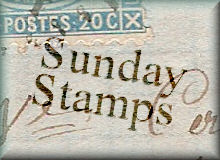
Puffer-Hubbard was a Minneapolis company that manufactured silos, folding delivery boxes, wheelbarrows, and other items. In a previous blog post I showed a postcard advertising Puffer-Hubbard's Panel Silos. The postcard shown here advertises their wire-sewed folding delivery boxes. The top half of the card shows the boxes when they were open and loaded. The bottom half of the card shows the boxes when they were empty and folded flat.
The back of this postcard, used in 1910, points out some of the advantages of using these boxes: "They take up less room in your store, give your wagons an up-to-date appearance, prevent loss of articles and insure their safe delivery."
The back of this postcard, used in 1910, points out some of the advantages of using these boxes: "They take up less room in your store, give your wagons an up-to-date appearance, prevent loss of articles and insure their safe delivery."

The illustration below is from a book found on Google.com Detailed plans and instructions for organizing and operating a co-operative delivery system. The boxes could be numbered, making them easier to locate when delivering. This book pointed out that "In addition to the advantages in the saving of time and space, the unique construction of these boxes makes them especially durable and being made of slats they can be kept in repair by unskilled help at a very slight cost."


















































